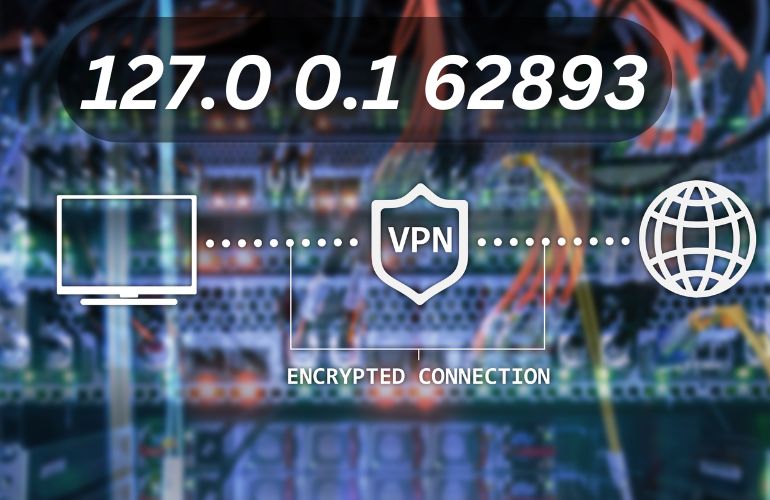
Introduction to Localhost and Port 62893
The term “127.0.0.1” refers to the loopback IP address, which allows a computer to communicate with itself. It’s a foundational concept in network testing, primarily used by developers to run and debug applications locally without affecting the network or external servers. Port 62893, on the other hand, is dynamically used for various services, particularly during development processes for internal testing.
How 127.0.0.1:62893 Works
Technically, 127.0.0.1:62893 involves the computer’s network software directing traffic to itself, bypassing external routes. This setup is essential for running local servers or applications in a controlled environment, effectively simulating network services without actual network communication. Commonly, it’s used by applications requiring isolated testing environments or local server emulation.
Benefits of Using 127.0.0.1:62893
- Isolated Testing: Allows developers to test applications without external influences, ensuring that the system behaves as expected in a controlled setting.
- Security Enhancements: Limits exposure of development environments to external vulnerabilities.
- Performance Optimization: Reduces network latency as data does not leave the machine, speeding up response times during testing.
Security Considerations
Using the loopback address with specific ports like 62893 is generally safe as it doesn’t expose the services to external networks. However, ensuring that these ports are closed to external traffic and secured against potential local exploits is crucial. Regular software updates and security audits are recommended to maintain a secure development environment.
Common Errors and Their Causes
Developers might encounter errors such as connection refusals or service unavailability when using port 62893. These issues often stem from:
- Services not running on the specified ports.
- Misconfigured firewall settings blocking local traffic.
- Conflicts with other services using the same port.
Step-by-Step Troubleshooting Guide
To resolve common issues with 127.0.0.1:62893:

- Verify that the required services are actively listening on the port.
- Check local firewall settings to ensure they allow traffic on port 62893.
- Use network monitoring tools to identify if other applications are using the same port.
Advanced Configuration and Optimization
Configuring network settings to cater to specific developmental needs can include assigning specific ports for certain services or setting up more complex local networking scenarios using virtual networks or VPNs to mimic production environments more closely.
Real-World Applications and Practical Examples
Developers use 127.0.0.1:62893 in scenarios like web development, software testing, and network application simulations. It allows them to run client-server applications without an actual network, testing functionalities like database connectivity and user authentication internally.
Conclusion
Understanding and utilizing 127.0.0.1:62893 effectively can significantly streamline the development and testing of network applications. It offers a blend of security, performance, and isolation, ideal for development scenarios.
Additional Resources and Learning More
For those interested in deepening their network knowledge, exploring courses on networking fundamentals or specific tutorials on network programming and local server management can be beneficial.
FAQs
1. What exactly is 127.0.0.1?
127.0.0.1 is commonly known as the localhost IP address. It’s like your computer’s home address for talking to itself. This is useful for testing and running programs locally without interacting with the wider internet.
2. Why would I use port 62893 with localhost?
Port 62893 isn’t assigned to any standard services and is often used for internal tests and development processes. Using this port allows developers to set up services that need to be tested without exposure to the external network.
3. Is it safe to use 127.0.0.1:62893 in my development environment?
Yes, using localhost with any port, including 62893, is generally safe as it doesn’t expose your computer to external networks. However, it’s good practice to ensure your development environment is secured and up-to-date to avoid any potential vulnerabilities.
4. How do I troubleshoot connection issues to 127.0.0.1:62893?
Start by checking if the service you’re trying to reach is actually running and listening on port 62893. Ensure there are no firewall rules blocking your access, and check for any other services that might be using the same port which could cause conflicts.
5. Can using localhost and port 62893 improve application performance?
Absolutely! Since traffic to localhost (127.0.0.1) stays within your machine, it avoids the latency that comes with network requests, making it a great way to optimize and speed up development and testing of applications that will later be deployed to a live environment.









